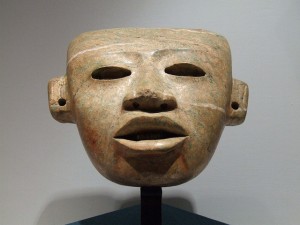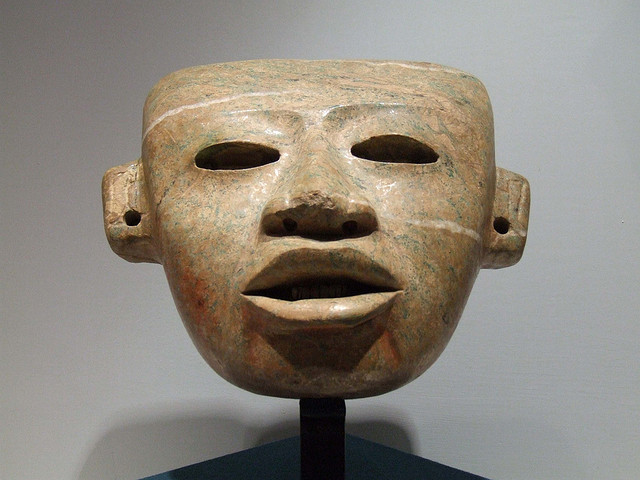 In his article on the work of Timothy Rose and Jane Walsh at the Smithsonian National Museum of Natural History, Josh Fischman writes of how, prior to recent microscopic analysis, two aspects of the famous stone masks found at the Pre-Columbian city of Teotihuacan in Mexico were thought to have been aptly established; that the masks were made locally within the city complex and that they were made of Jadeite. However, it transpires following the results using a low-vacuum electron microscope that neither of these assumptions were correct. Not only do the findings indicate that the masks were made some distance away, they also identify the substance from which they are made, minerals such as serpentinite, limestone and travertine, which are softer than jadeite. Although the mask makers themselves have not been located, it is thought that they were imported into the city at a time when Teotihuacan was an important trading centre, represented by its splendid pyramids, broad boulevards, buildings and various structures. It is estimated that at had 100,000 inhabitants at its peak.
In his article on the work of Timothy Rose and Jane Walsh at the Smithsonian National Museum of Natural History, Josh Fischman writes of how, prior to recent microscopic analysis, two aspects of the famous stone masks found at the Pre-Columbian city of Teotihuacan in Mexico were thought to have been aptly established; that the masks were made locally within the city complex and that they were made of Jadeite. However, it transpires following the results using a low-vacuum electron microscope that neither of these assumptions were correct. Not only do the findings indicate that the masks were made some distance away, they also identify the substance from which they are made, minerals such as serpentinite, limestone and travertine, which are softer than jadeite. Although the mask makers themselves have not been located, it is thought that they were imported into the city at a time when Teotihuacan was an important trading centre, represented by its splendid pyramids, broad boulevards, buildings and various structures. It is estimated that at had 100,000 inhabitants at its peak.
Rose found traces of quartz which would indicate that quartz had been used to polish the surface of these masks. It acted as a hard abrasive. Quartz, the article states, was not available locally and it is thought that the masks therefore were made, and polished, about 150km away in a place called Puebla where workshops have been found to exist and which made ceramic artifacts of the kind characteristic of those found at Teotihuacan, though not any of the masks have been found there.
The electron microscope scanned 1 micron deep and was able to reveal the stone hand file tools tooling pre-Columbians used to cut the masks. More than this, and apart from revealing that three of the 150 masked investigated were fakes, the scan also indicated traces of an algae in the form of a soft sediment which suggests that it was used as a final stage in the polishing process. The algae, like quartz, is not found locally in Teotihuacan, but is found near Puebla, supporting the idea further that the masks had been transported over this distance to the pre-Colombian city.
